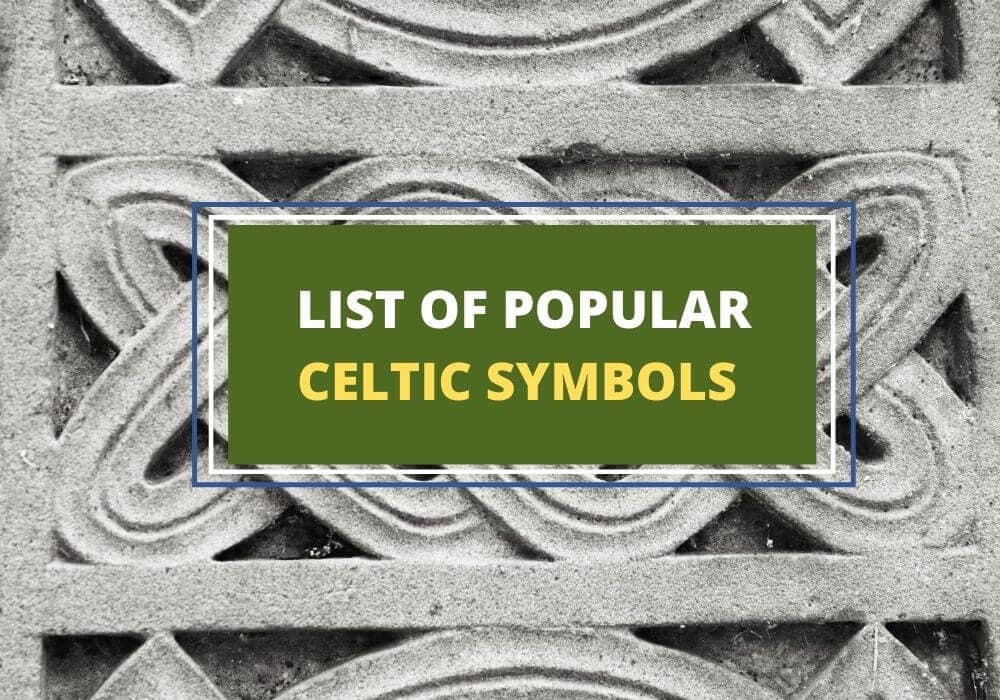
Table of Contents
The Celts trace their heritage back to the ancient Roman city of Gaul, from where they eventually spread to the mainland of Europe, specifically Ireland, Scotland, Britain, and other locations in Western Europe.
As a people that was deeply connected to nature and whose livelihood relied on agriculture, it should come as no surprise that the symbolism of the Celts reflects this relationship with the earth and nature.
Celtic symbols also serve to connect the Celts with their ancestors and realize their shared heritage. Let’s take a look at some of the most popular symbols that the Celts have given us.
Celtic Knots
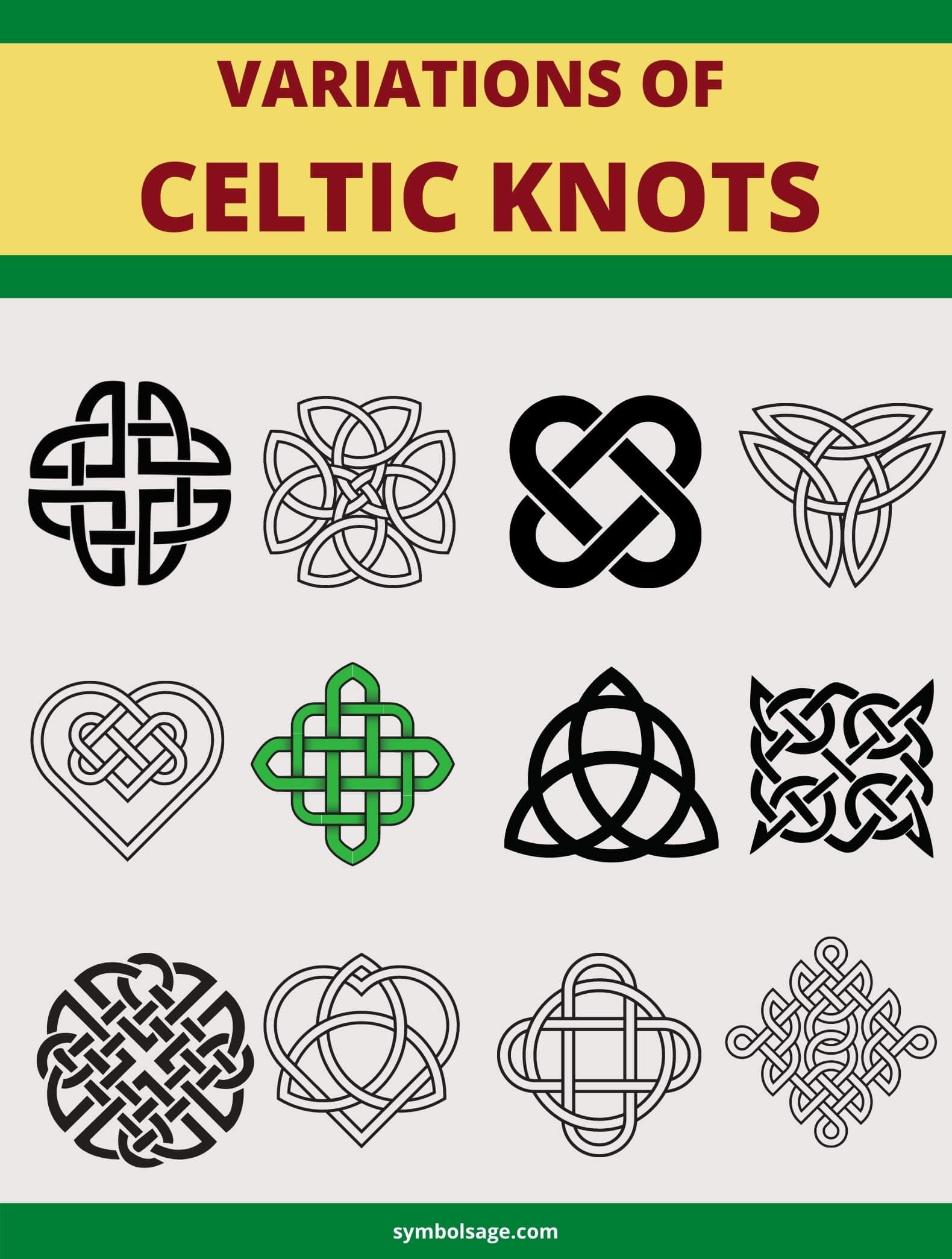
Celtic knots are elaborate, interwoven patterns that the Celts used for decorative purposes, especially in the Insular Art style known for its rich interwoven patterning.
The most prominent forms of knots within the Celtic culture are spirals, step patterns, and key patterns (in which there is a repeating of horizontal and vertical lines).
While used as decorative motifs, these knots began to acquire symbolism and meanings. Here are several common knots found within Celtic circles.
1. The Dara Celtic Knot
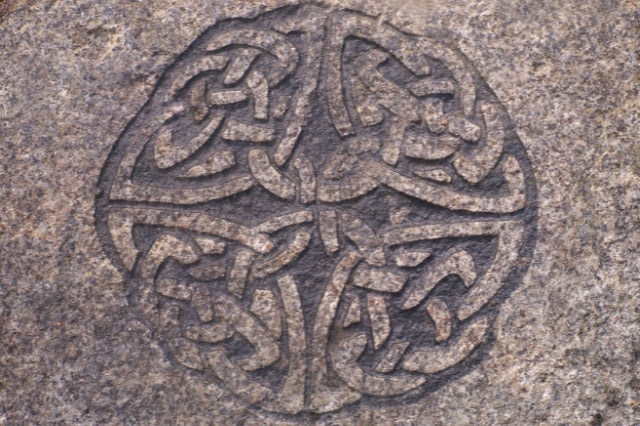
The Dara Celtic Knot is one of the most recognizable knots. The word “Dara” comes from the Gaelic “Doire” which means “Oak Tree”.
Here we see the connection that the Celts had with nature. The Oak Tree, with its extensive root system, was seen to be mighty and able to withstand the severest of storms.
The Dara Knot is a symbol of the Oak Tree’s roots and is a symbol of strength and power. This knot is used by Celtic people as a symbol of courage and inner wisdom when facing trying times.
2. The Quaternary Celtic Knot (Celtic Shield Knot)
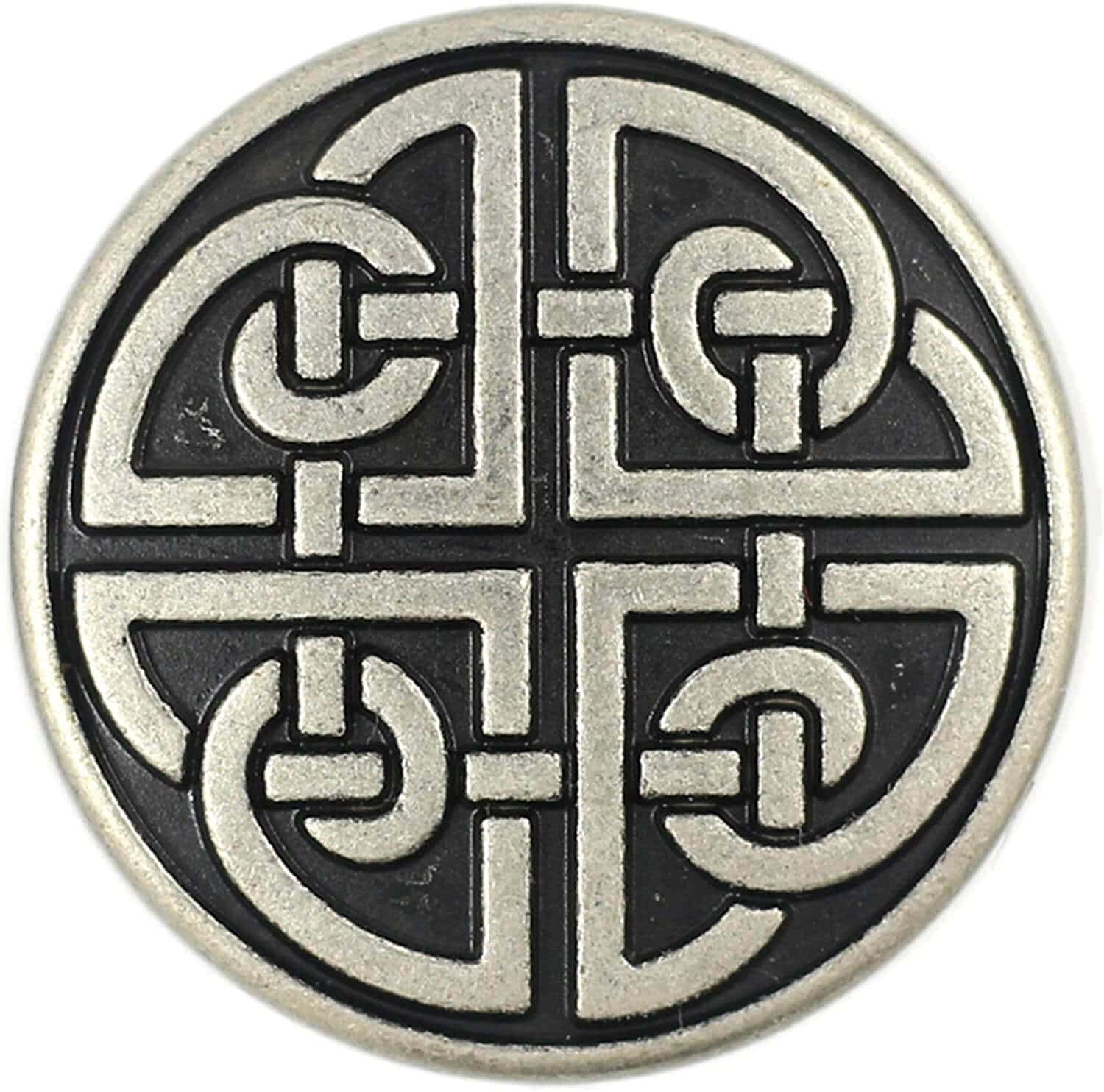
The Celtic Shield Knot is open to individual interpretation as the one who creates the image can enhance the design depending on what they want to emphasize. Here are some interpretations:
- The four corners can represent the four cardinal points: North, South, East, West.
- Also, they could stand for the four seasons.
- Again, due to the Celtic attachment to the natural world, each quarter of the knot could be taken to indicate the four elements: Earth, Air, Water, and Fire.
- Another interpretation sees the Quaternary Knot as symbolizing the four treasures of the Fairy lords Tuatha de Danann, who were famed for reclaiming Ireland for the Fomorians who ruled the country. The four treasures were a spear, a stone, a sword, and a cauldron which were imbued with magical powers. From this mythical tale, the Quaternary Knot became a symbol of protection.
3. The Eternity Knot
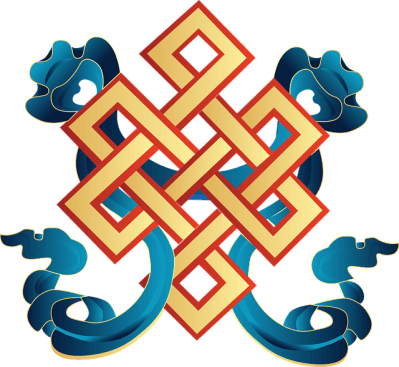
With its closed path, the eternity or endless knot indicates the cyclic nature of time, which is endless and unchanging. It also has a social meaning in which it reflects love and friendships that endure.
Additionally, the Eternity Knot is a reflection of the duality of male-female. On a spiritual level, the knot can symbolize faith as opposed to materialism.
4. Solomon’s knot
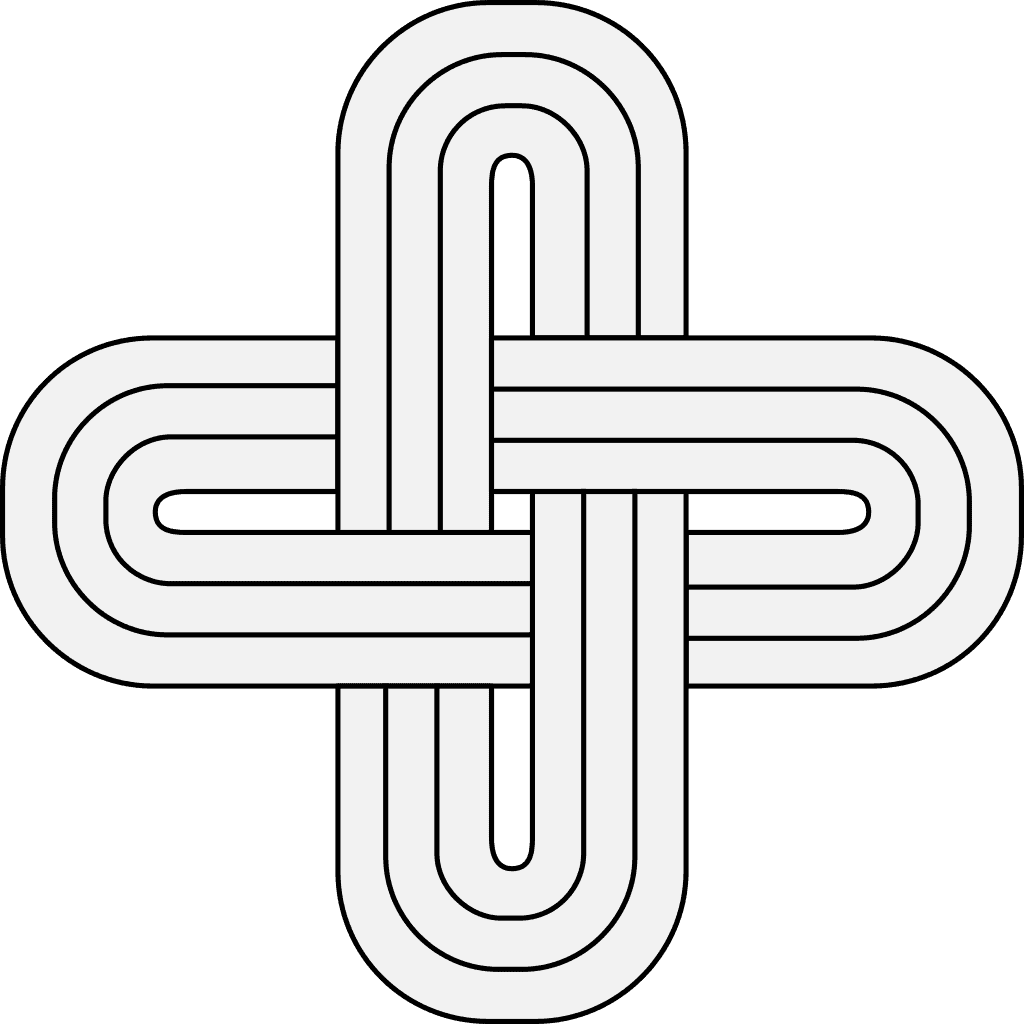
This knot is one of the oldest Celtic knots and possesses several meanings. Like the Eternity Knot, Solomon’s Knot has no beginning or end so it can be seen to represent infinity as well as immortality.
The image of two interlaced figures also is interpreted as the union between a man and the divine. This image can also be indicative of the joining together of male and female in a loving relationship.
5. The Sailor’s Knot
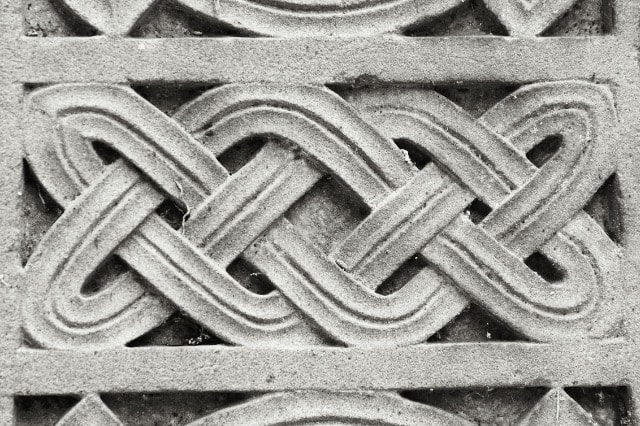
The image of the Sailor’s Knot consists of two intertwined ropes which reflects the love between the sailor who is about to embark on a journey and the loved one he is leaving behind.
When one physically creates a sailor’s knot, you will find that it is one of the strongest knots made and therefore represents the power of love.
It can also symbolize the bond of friendship and affection the sailor shows towards others. It’s also seen as indicating the union of two people as the knot ties together two separate ropes into one.
Celtic Spirals
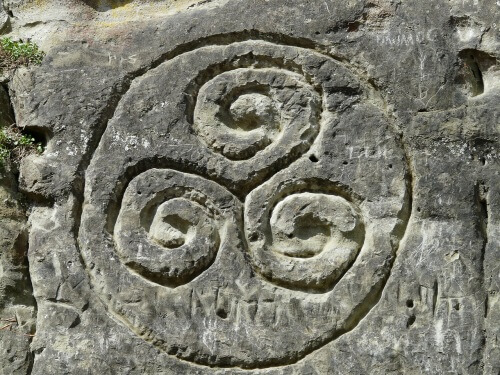
Like knots, spirals are another traditional art form used by the Celts. They reflect a variety of beliefs that the Celtics hold such as the expansion of one’s consciousness.
The idea is that life is never a straight path but winds around itself, and is a symbol of the cosmos which is expanding from a central point.
With that said, let’s take a closer look at what spirals mean for the Celts.
6. Single Spiral
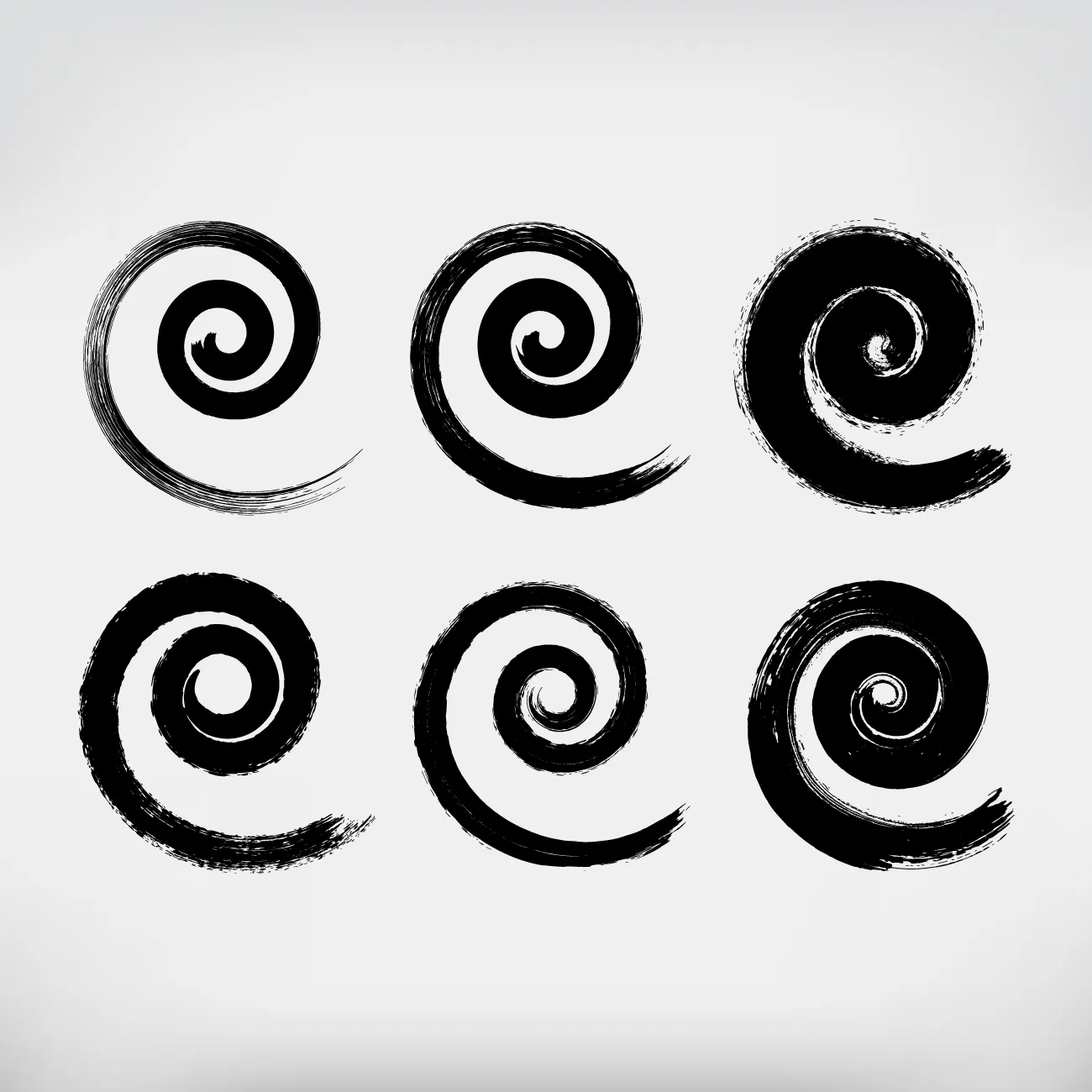
This spiral is a favorite symbol in Celtic culture. Radiating out from a central point, it indicates the concept of an individual’s development in consciousness as well as growth.
The single spiral also represents forward momentum in life – the progress you have made from one point to another.
Though it may feel like one is going around in circles persevere in your journey, and you will reach your destination.
7. Double Spiral
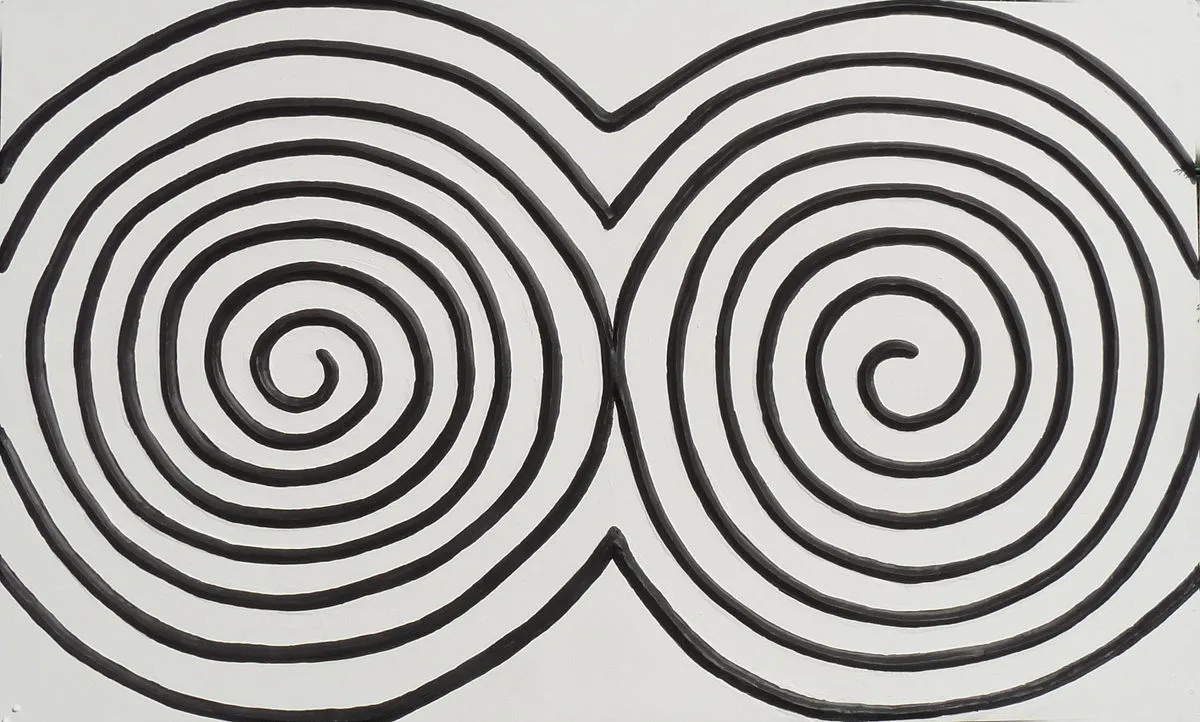
A double spiral made up of two lines can symbolize balance. Because the Celts place importance on the cyclical nature of the seasons, the double spiral can represent the equinoxes as well as the Sun’s movement throughout the year.
Yet another interpretation of the double spiral sees it as the harmony between two rival forces. Similar to the single spiral, there is a spiritual aspect to the double spiral whereby it represents spiritual awakening and the union between the divine world and the earthly world.
The circular nature of the icon lends itself to the idea of birth, death, and rebirth and the persistent pattern of destruction and creation.
8. Triple Spiral

This Celtic symbol is also known as the Triskelion, or Triskele, which means “three legs” in Greek and has a variety of meanings. With its association with legs, the Triple Spiral can indicate forward movement and progress.
Also, the triad nature of the image is interpreted as representing the triune nature of man as spirit-body-mind, or time as past-present-future and of family relationships through mother-father-child.
Yet another interpretation sees the Triple Spiral reflecting the Celtic understanding of three worlds: the spiritual, physical, and celestial. All reveal the idea of a union as the arms of the Triskele emanate from a central point.
Celtic Animal Symbols
The attachment and symbolism of the Celts extend to the animal kingdom, and there are several icons that the Celts used to indicate and symbolize the characteristics of these animals.
Ideas such as strength, power, and stubbornness are all seen within the animalistic figures of the Celts.
9. The Celtic Bull
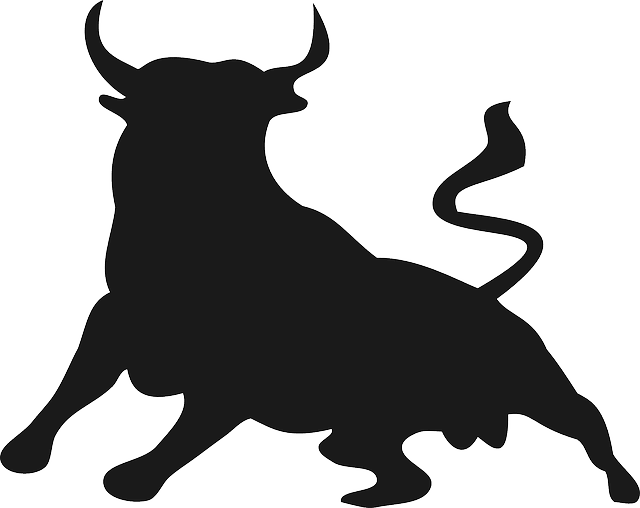
The bull is a creature that is determined and strong-willed, and it should be no surprise that the Celts used this animal as a reflection of those traits.
Other characteristics that the bull symbolizes are not compromising and being headstrong. On a more intimate level, the beast can represent the virility of a male and a female’s fertility.
In financial terms, a “bull-market” is one that is strong with prices rising. This idea of the bull indicating riches also occurs within the Celts.
10. The Dragon

There’s hardly a culture in which dragons don’t make an appearance. For the Celts, the dragons were magical creatures that bring prosperity.
This belief comes from the idea that the trail the dragon made as it flew would cause the ground below to become fertile, a view coming from the Druids’ claim that dragons had control over natural elements such as water and rain.
More modern drawings of the Celtic dragon show it with its tail in its mouth, similar to the Ouroboros. This image indicates nature’s cycle of death and birth.
11. The Boar
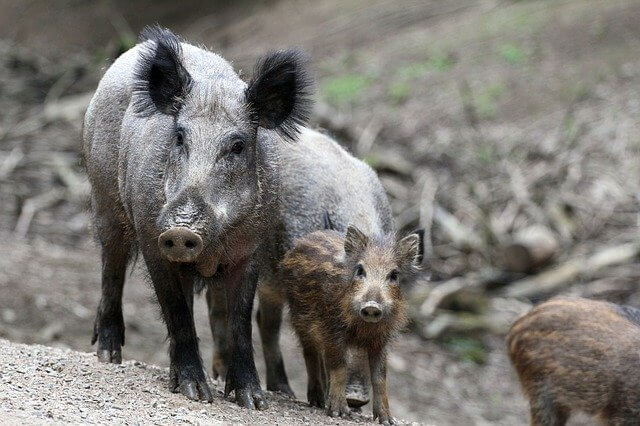
The boar is one of the most popular animals in Celtic symbolism. It is an emblem of courage, bravery, and aggression in war.
This representation is due to the ability of the creature to defend itself when threatened. On a less hostile understanding, the boar, with its sexual prowess, was used to symbolize a male and female’s passion in the bedroom.
Also, the female boar’s willingness to protect her offspring even if it meant death, is taken as an image of great motherhood.
12. The Stag
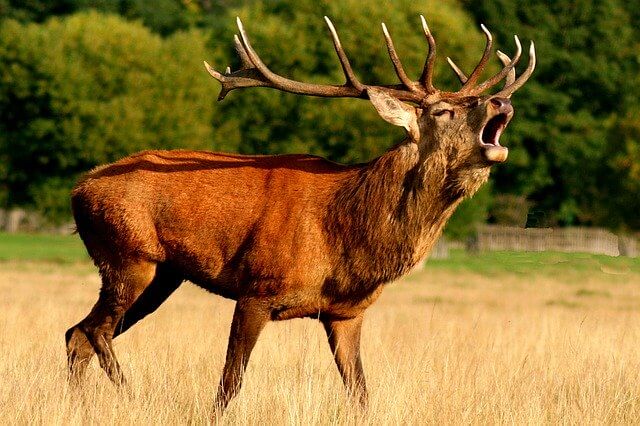
The swiftness of the stag is a sign of agility. The Celts also saw the shedding and renewal of the stag’s antlers as synonymous with the regeneration of earth and nature.
An image, discovered in Rheims, depicts a stag drinking from a brook containing coins.
This symbolism suggests that the Celts believe the stag to be a sign of prosperity which is understandable when one considers the fact that the Celts used stags for meat and clothing.
The antlers on the stag can also be dangerous when the creature is defending itself. So, the stag can symbolize power as well as the violence seen in nature.
13. The Griffin

Yes, this is a mythical creature, yet it still finds a place within Celtic symbolism. The Griffin is part lion and part eagle, suggesting power and aggression.
Because it’s a creature that consists of both good and bad qualities, it represents the balance between good and evil. It indicates the concept of protection as the Griffin keeps and guards us in both this life and the next.
Celtic Crosses

Celtic crosses started to appear in the Middle Ages as Christianity began to infiltrate Celtic belief through the influence of Irish missionaries. Let’s examine the common crosses that appear within Celtic circles.
14. The Celtic Cross
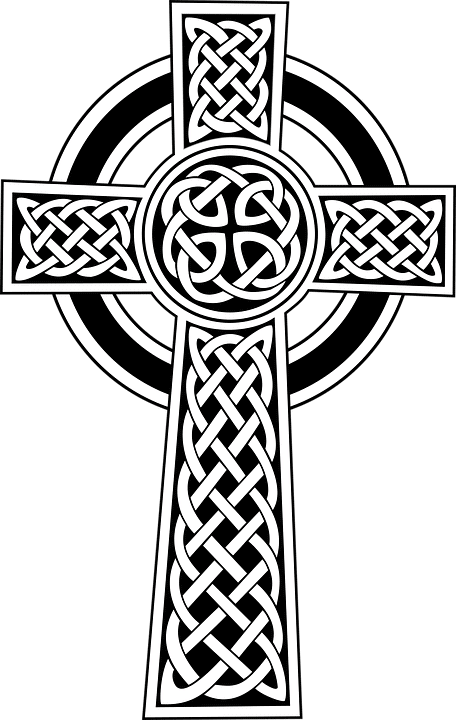
The Celtic Cross is similar to the Latin cross, except that it features a circle at the upper end. One legend suggests that St Patrick introduced the cross in his outreach to the pagans in Ireland.
It appears to be a combination of the ancient sun cross with the Christian cross.
Like any other symbol, the Celtic Cross is subject to a range of interpretations. Some scholars say that the circle that encompasses the cross is a symbol of the Sun, the cross representing Jesus.
Therefore, it can be taken to indicate Jesus is the light of the world.
Another interpretation sees the position of the cross over the circle as a symbol of Christ’s domination over the pagan Sun deity.
15. St Brigid’s Cross
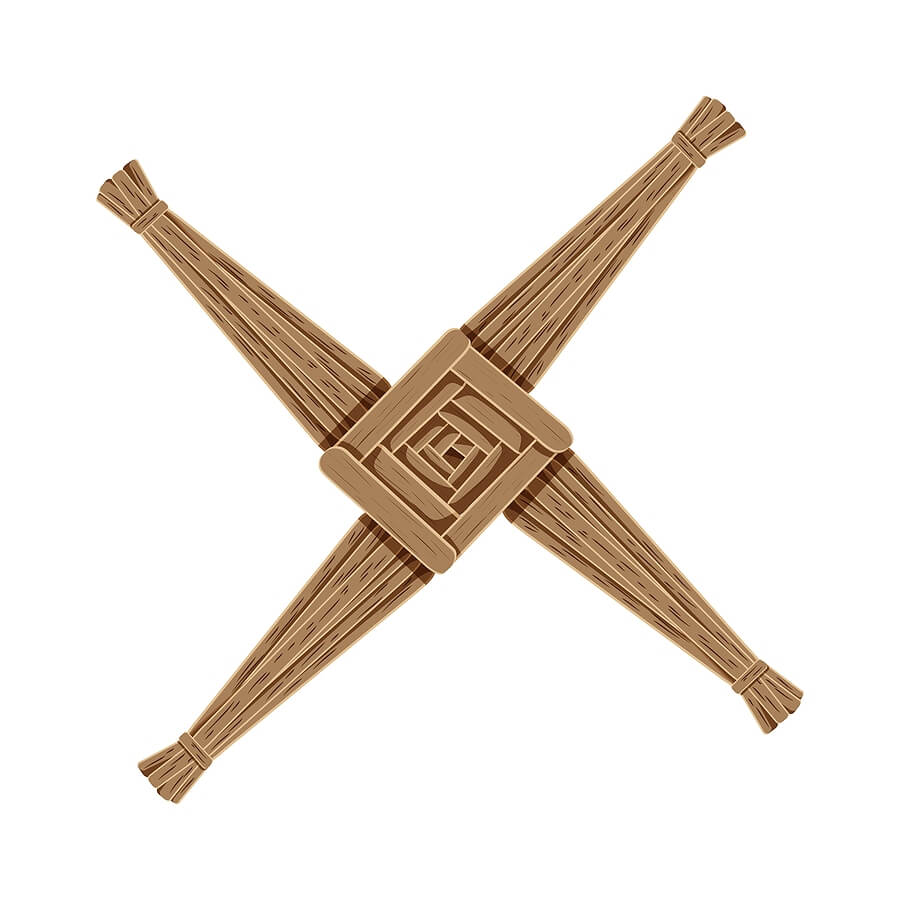
Some scholars trace the origin of St Brigid’s Cross to the pre-Christian era of Celtic history.
St Brigid’s cross was woven in pagan Ireland as a symbol of the goddess Brigid. Traditionally it is seen as a symbol of protection to ward off fire and evil from your home and was typically hung above the front door.
Another theory behind the creation of St Brigid’s Cross sees it as stemming from a pagan sun wheel, thus symbolizing fertility and abundance as the sun is known for its ability to give light and life to all that it shines on.
Figures from Celtic Lore
As we have touched upon, the Celts had an affinity with nature and the earth. Therefore, there are two figures worthy of mention as they have a place within Celtic mythology and symbolism.
16. Sheela Na Gig

The Sheela Na Gig appears in many architectural designs around West Europe, especially in Scotland and Ireland.
Portrayed as a female with an enormous vulva, a few scholars believe that the Sheela Na Gig is a depiction of the Cailleach.
The Cailleach is a hag-like creature who seeks to seduce males. Therefore, the Sheela Na Gig is seen to be a symbol of fertility.
Attached to churches from the Romanesque era (around 1000AD), some historians see the Sheela Na Gig as a warning against lust. With the arrival of the feminist movement, Sheela Na Gig took on a more positive interpretation.
Some feminist authors such as Eve Ensler in The Vagina Monologues see Sheela Na Gig as a symbol of feminine empowerment and strength.
17. The Green Man
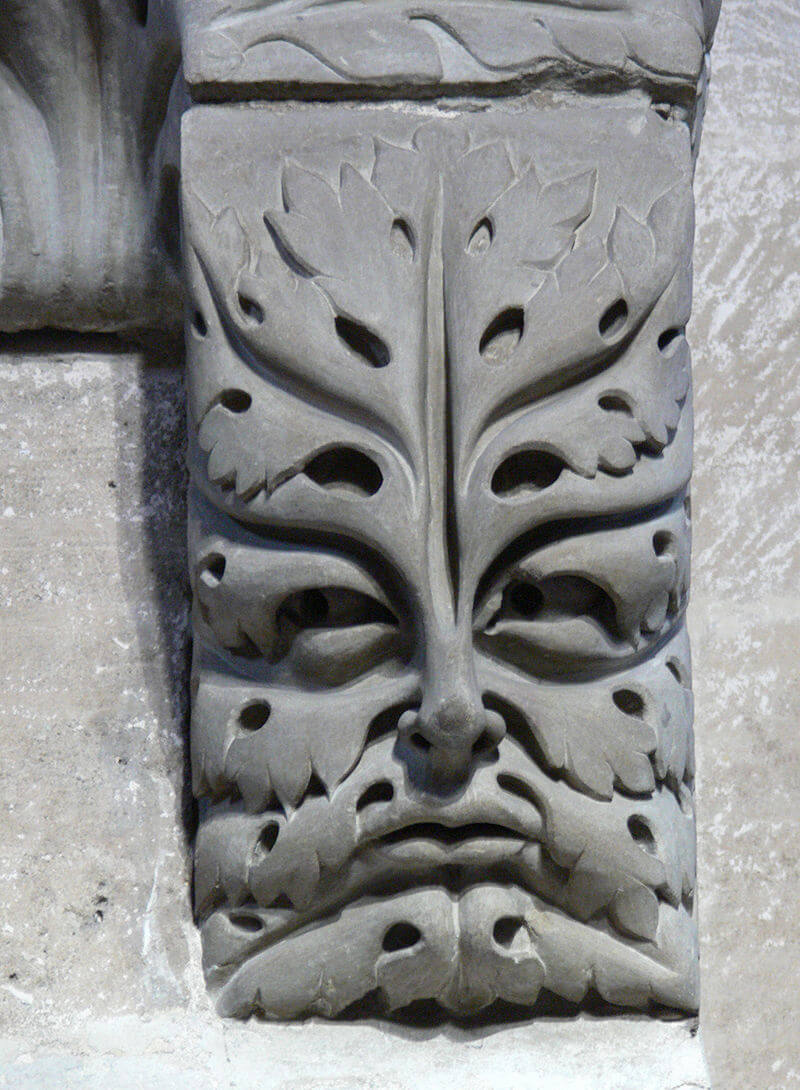
This figure can take on a range of depictions such as being merely a face or someone peering from foliage. There are several occasions when the Green Man is a female, the Green Woman.
The hair and beard of the Green Man consist of leaves and roots, with leaves coming out of his mouth and nose.
He is a symbol of spring, a season in which there is regrowth and regeneration.
Other Traditional Celtic symbols
The Celts have given us a heritage rich with symbolism that extends beyond knots, animals, crosses, and pagan figures, such as the following:
18. Shamrock
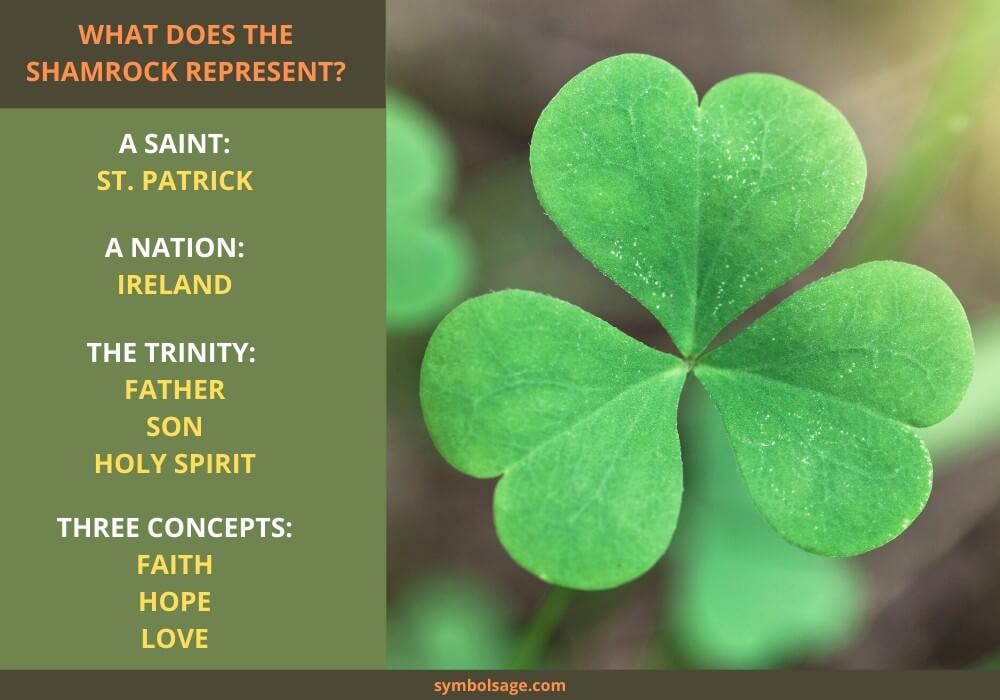
What is more Irish than the Shamrock? It has gained a special place within Ireland, and we can trace the heritage of the Shamrock to the Celts who had a thing about the number three.
With its three leaves, the Shamrock is a symbol of the three ages of man – youth, middle age, and old age, or the three provinces of earth, sky, and ocean.
St. Patrick saw the Shamrock as an analogy of the Holy Trinity: Father, Son, and Holy Spirit. The 19th century saw the Shamrock take on political meaning as a symbol of Irish nationalism and rebellion against the British.
19. Crann Bethadh
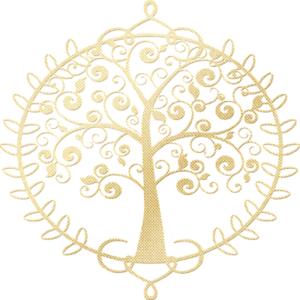
The Crann Bethadh is the Celtic Tree of Life. It’s typically symmetrical in design and is a symbol of balance and harmony.
The Celts also believe that the Tree of Life is a representation of the cycle of life because, as a tree gets old and dies, it is born again via the seeds it provided.
Just as a tree has roots that extend to the lower parts of the earth, a trunk that takes up space above the earth, and branches that touch the heavens, the Tree of Life symbolizes the union between the spiritual and the earthly realms.
20. Claddagh Ring
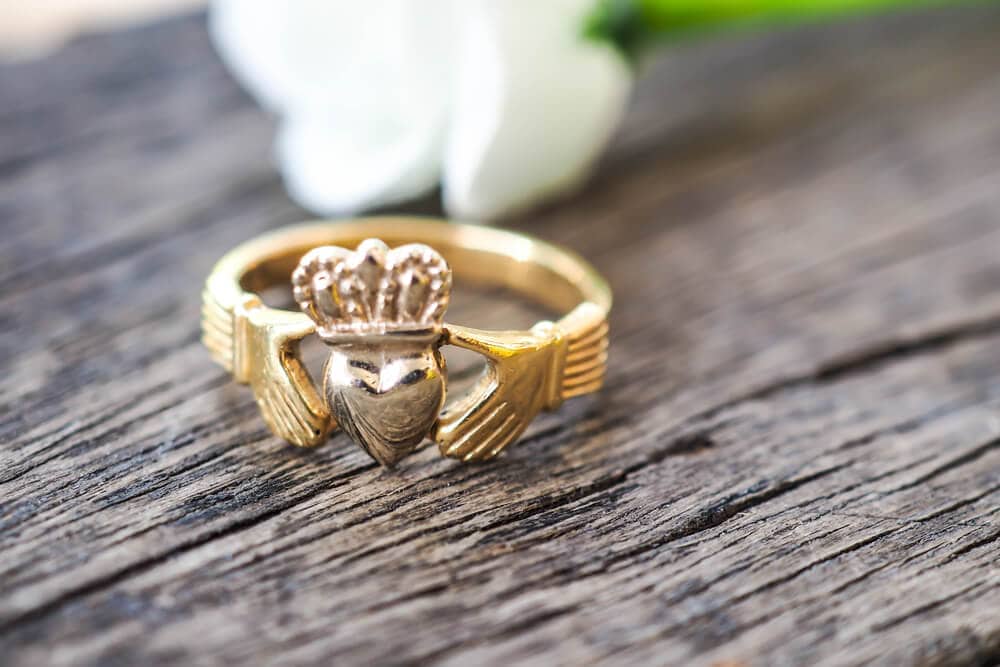
Though only appearing around the 1700s, the Claddagh Ring has firmly found itself at home with the Celtic world.
There is debate on exactly where the Claddagh Ring first originated, yet a majority of scholars place it in the fishing village of Claddagh in Galway.
The ring is designed with two hands clasping a heart on top of which is a crown. The heart symbolizes love, the two hands indicate friendship and the crown represents loyalty.
It can also be an indication of your relationship status, which depends on how you wear the ring:
- Single: The ring is on the right hand with the heart facing outwards.
- In a relationship: The ring is on the right hand with the heart pointing inward.
- Engaged: The ring is on the left hand with the heart pointing outward.
- Married: The ring is on the left hand with the heart pointing inward.
21. Ailm
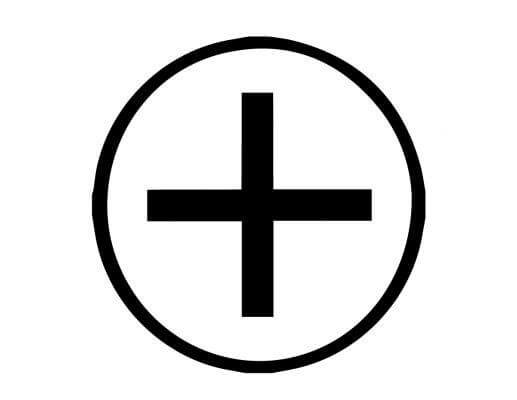
The Ailm is amongst the most important Celtic symbols and comes from the Celtic letter for “A” of the Ogham alphabet.
It stands for strength, endurance, guidance, and objectivity.
The circle that encloses the A is a symbol of the purity of the soul and one’s wholeness. Looking at the Celtic Orgham alphabet, we find that the A symbolizes the conifer tree.
This tree is an image of the stamina and resilience we need to endure the hard times and enjoy the good times.
22. Awen

With three lines reaching up to a single point, all enclosed by three circles, the Awen has gained many interpretations over the years.
Some people see the rings as a representation of male and female, with the lines in the center indicating balance.
Therefore, it can be a symbol of the balance of masculine and feminine energies.
The lines can also represent rays of light. With this idea, the Awen is a symbol of the triad division of man into spirit, mind, and body.
The lines can stand for the three realms of earth, sky, and sea. On another level, the Awen with its three lines can represent love, wisdom, and truth.
23. The Five-Fold Symbol
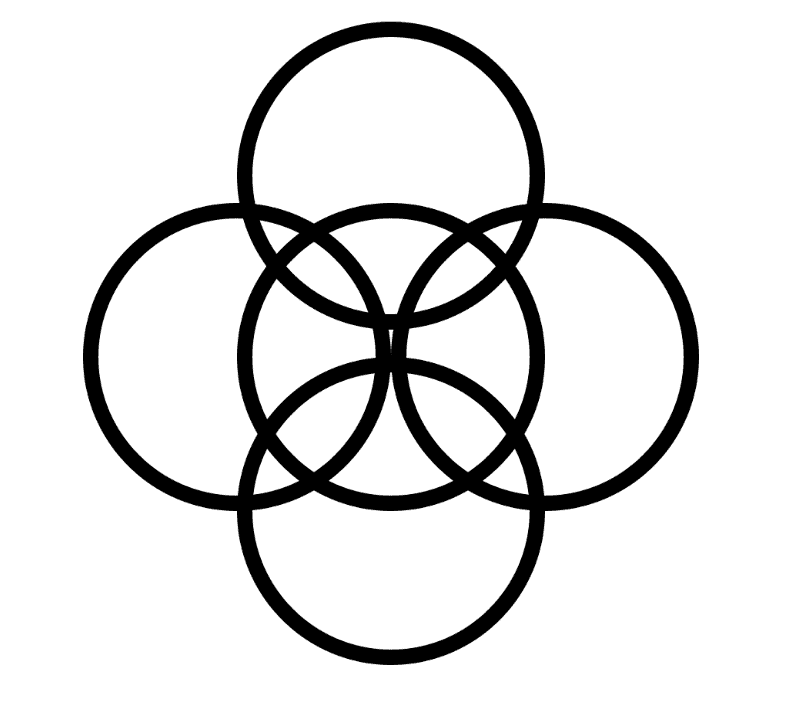
The Five-Fold Symbol looks like Olympic rings that have gone astray. Four outer rings are held together and bound by a center ring.
Though not unique to the Celts, it does have a special place in the Celtic culture.
The Five-Fold Symbol represents a holistic view of spirituality in which God, faith, heaven, the cosmos, and time are all joined together by a mysterious force (the Divine).
It is a symbol of how all things are interconnected and flow together, working in harmony. The pivotal ring is the one in the center holding everything together.
Wrapping Up
The Celts have myriads of symbols, and we have only touched on a few of the more recognizable ones. These symbols reflect the Celtic view of the divine and nature as intertwined.
Some symbols have taken on new meanings with the introduction of Christianity. Even so, there is still the fundamental meaning that reflects the naturalistic beliefs of the Celts.
Similar Articles:
List of Celtic Gods and Goddesses
Celtic Mythology – An Overview of a Unique Mythology








